|
The brazilian wood based panels market is in a consolidation phasis of a growth and modernization cycle on
its business segment, which started on 1997, when the already existing companies like Berneck, Duratex and
Satipel started up new production lines - MDF from Duratex at the Agudos/SP site on 1997 and Tafisa at the
Piên/PR site on 1998, and MDP from Berneck at Araucária/PR, Duratex at Itapetininga/SP and Satipel at
Uberaba/MG on the years 1999 and 2000. At the end of 2000, Masisa started its operation in Brazil with the
MDF line installed at Ponta Grossa/PR.
At the beginning of 2000, the civil construction market, both for the dry construction system and for the
traditional system (masonry), represented also a big potential of consumption for OSB panels. So it was
that Masisa became the first company in Brazil to invest in this product, installed a brand new production
line at the existing site of Ponta Grossa/PR, whose control was transferred to LP Brasil on november 2008.
Seeing an opportunity of coming into the brazilian market by incorporating one of the existing players,
Arauco took over the control from Placas do Paraná, taking advantage of the Forest base and starting of
offer MDP from its site in Curitiba/PR as well MDF since the plant located in Jaguariaíva/PR, whose
start-up occurred on september 2001.
With signaling that the economy would have an increase on consumption of panels at the furniture
manufacturers, this wave of new investments had continuity at the years from 2002 to 2006, period when
it also occurred the installation of these lines more:
- Tafisa Piên/PR - MDF II (2002)
- Fibraplac Glorinha - MDF I (2003)
- Duratex Botucatu/SP - MDF (2004)
- Fibraplac Glorinha - MDF II (2006).
Concomitant to these new panel production lines, followed projects of new paper impregnating lines
(Duratex, Eucatex, Masisa, Fibraplac and Satipel) some of them were installed at the 2000’s; and also
melamine/short-cycle presses for flooring and furniture installed by Arauco, Berneck, Duratex, Eucatex,
Fibraplac, Masisa and Satipel.
Watching the growing demand for MDF, traditional plywood producers like Guararapes and Sudati also saw
business opportunities, and installed in 2009, at the state of Santa Catarina, 2 production lines with
multi-opening presses, for further value adding by means of melamine coating.
At the years of 2008 and 2009 we watched the start-up of other 3 MDF lines and 2 MDP lines:
- Satipel Uberaba/MG - MDF
- Berneck Araucária - MDF
- Duratex Agudos/SP - MDF II
- Masisa Montenegro - MDP
- Satipel Taquari - MDP.
In 2010 we had the opportunity to follow the conclusion of erection and the start-up of the T-HDF line
from Eucatex in Salto/SP.
For 2012 were still expected:
- the 2nd MDF from Berneck, located at Curitibanos, at the state of Santa Catarina;
- the 2nd MDF line from Arauco at the same existing site of Jaguariaíva/PR;
- the 2nd line from Duratex at the existing site located in Itapetininga/SP, now for MDF production.
For 2017 it’s planned to start the operations of the brazilian company Asperbrás in the city of Água Clara-MS.
Initially it will be erected a medium density fiberboard production line (MDF) and in the sequence a particleboard
production line (MDP) is also foreseen.
Floraplac, located in Paragominas, Pará, started its Chinese production line (SWPM), with 220,000m³ / year of nominal capacity in October 2010. Now, despite the unexpected competition from some large-scale MDF producers in the southeast from Brazil, the company made its name in the Northeast to also sell its panels coated with melamine (BP).
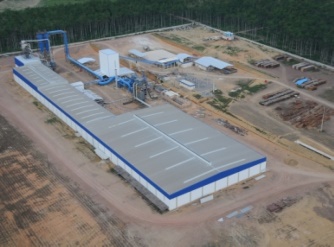
Floraplac MDF, the first MDF supplier to manufacture in the heart of northern Brazil, claims to have gained a substantial share, around 70%, of the panel market in this rapidly developing region.
The company uses a new blend of eucalyptus fibers and low density tropical hardwood (paricá) for its panels.
Floraplac MDF is the wood panel subsidiary of Pará Grupo Concrem de Dom Eliseu for wood, plywood and solid wood panels.
Since the factory started, when it started making panels with 100% eucalyptus, it gradually added more paricá fiber to obtain a mixture with panel characteristics now close to those of pine panels.
The market continues to move, with Berneck launching its second MDF line from Siempelkamp, ??now in Curitibanos (SC), in June 2012.
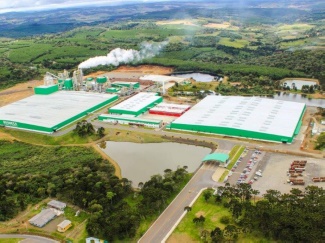
In the sequence, we followed Arauco in Jaguariaíva to increase the references of the German supplier, with its second MDF line, whose production started in March 2013.
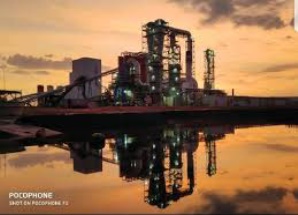
We turn our eyes again to São Paulo, where Duratex unveiled another major project, with the second line of panels in Itapetininga, now for MDF panels.
The line of the always supplier Siempelkamp, ??with a capacity of 520,000 m³ / year, started up in June 2013.
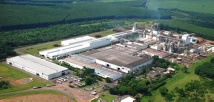

Due to lower than expected market demand, the company's management decided to stop operations on the site in 2015.
With the reheat, Duratex resumed production in April 2018.
The year 2014 marked the departure in December of Berneck's second production line in Curitibanos (SC), maintaining the Araucária operational model, now with a line of MDP panels.
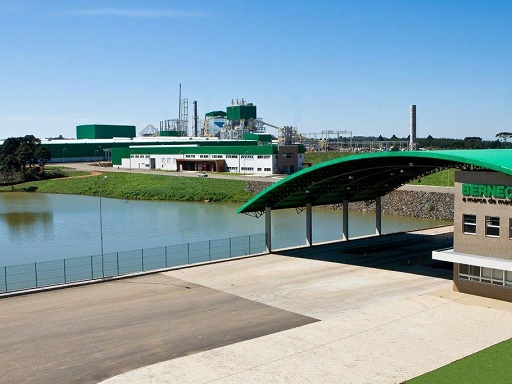
Smaller manufacturers also move !
The years 2016 and 2018 marked the movement of these manufacturers:
1) Guararapes left in May 2016 its second MDF line, now exchanging the Chinese SWPM for Siempelkamp.
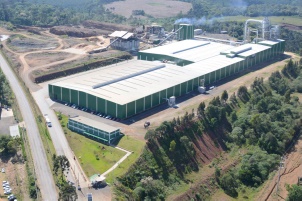
2) A new player, GreenPlac, from the Asperbras group, appears, with the announced start of operations in June 2018 of the announced MDF line in the city of Água Clara, in the state of Mato Grosso do Sul, with a capacity of 250,000 m³ / year.
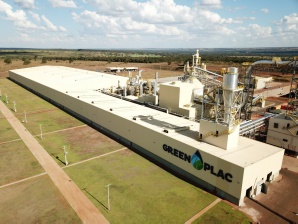
3) 2018 still has room for the launch of yet another new production line. Placa do Brasil was created in 2011 with the union of businessmen Espírito Santenses. Headquartered in the municipality of Pinheiros, north of the state of Espírito Santo, in the southeastern region of Brazil. Its strategic location is an excellent source of supply and logistics for the markets of the states of Espírito Santo, Minas Gerais, and Rio de Janeiro and the entire northeast of Brazil.

The chosen supplier was also the competent Dieffenbacher, with a line for 360,000 m³ / year.
Production started in June 2018.
4) 2018 closes with the continuation of Floraplac's growth strategy, with the departure of its 2nd MDF line, in October, from the same supplier of Placa do Brasil, increasing Dieffenbacher's references in our market.
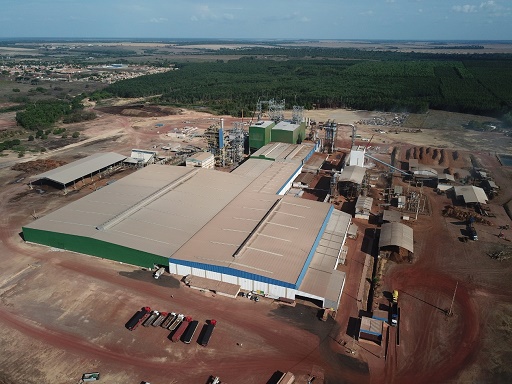
The state of Santa Catarina continues to have the spotlight for itself: the next awaited move is the start of Berneck's operations in Lages, scheduled for the second half of 2021.
The project includes a MDF line with a capacity of 570,000 m³ / year, followed by a sawn line, with a capacity of 450,000 m³ / year.
The majority, according to the company's president, Gilson Berneck, is that 70% of MDF production will be destined for the domestic regional and national market, and the rest for the foreign market, mainly South America, the United States and China.
The work is 30% completed, this because it was delayed due to the pandemic with the stoppage of civil construction activities.
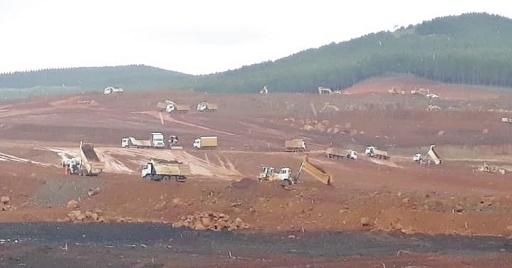
The Scenarios Ibá Bulletin, produced by the Brazilian Tree Industry (Ibá), pointed out that, in the first quarter of 2020, products from the forest-based industry reached US $ 2.0 billion in sales to other countries. Cellulose totaled US $ 1.5 billion, while paper totaled US $ 451 million and wood panels US $ 68 million.
The sector's trade balance reached US $ 1.8 billion (-27.5%). In the period, the sector represented 9.6% of national agribusiness exports and 4.1% of total Brazilian foreign trade.
In the first quarter of this year, China continued as the main Brazilian pulp market, acquiring US $ 719 million of the product. Latin America, in turn, is the destination with the highest negotiation for wood panels (US $ 38 million) and paper (US $ 262 million).
“These are figures for a period that covers January, February and March, the month when the pandemic was still starting its escalation in Brazil. But the increase in paper production demonstrated how products originating from cultivated trees, such as packaging, which make food and medicines reach markets and homes, and sanitary papers, such as toilet paper and handkerchiefs, proved to be fundamental. This is a natural sector of the bioeconomy, with a renewable base, present in the daily lives of people and which is on the side of people in the fight against Covid-19 ”, said Paulo Hartung, president of the Brazilian Tree Industry.
Check below the performance indicators of the tree planted sector during the first quarter of 2020, obtained from the monthly bulletin of the Brazilian Tree Industry.
Production - Paper production reached 2.6 million tons (+ 1.2%) in the quarter. The highlights were paper for sanitary purposes (+ 4.0%), paperboard (+ 2.8%) and packaging paper (+ 2.8%). Pulp production totaled 5.1 million tons (+ 5.3%).
Domestic Sales - Sales of wood panels in Brazil, in the first quarter of 2020, totaled 1.6 million m3 (-1.2%). The volume of domestic paper sales was 1.3 million tonnes.
Volume exports - Paper exports increased by 3.8%, with a total of 518 thousand tons sold. Pulp reached 3.8 million tonnes negotiated with other countries during the period. Wood panels totaled 313 thousand m3 exported.
Sources: Brazilian Tree Industry (Indústria Brasileira de Árvores, Ibá)
Corporative websites of the panelboard producers
Magazine Wood Based Panels International Online
Portal “Móveis de Valor”
Website madeiratotal.com.br.
EFFECTS OF PANDEMIC BY COVID-19 ON THE CELLULOSE AND PAPER SECTOR
The projections for growth in the global economy in 2020, revised based on the effects of the pandemic by Covid-19, are alarming in the short term.
Consensus Economics data, combined with long-term estimates from OECD and AFRY, show a sharp drop in wealth generation, which is expected to be negative by 4% this year. All major markets will experience significant losses, with the exception of China, which today points to a 1.9% GDP growth, well below the 6.7% rate recorded in 2016 and which was the lowest growth recorded in the last two decades.
Western Europe, for example, is expected to shrink 8% this year, while North American countries will have a negative GDP of 6.4%. In the case of Latin America, the estimated fall is 4% and, seen in isolation, the largest economy in the bloc, Brazil, is expected to shrink even further, with GDP drop between 6% and 10% in 2020.
The pandemic has catalyzed global trends, with structural and permanent impacts. Digitization and remote work have grown in companies; distance learning tries to fill the gap that social isolation has imposed, and we are seeing e-commerce advancing rapidly in several sectors. In other words, they are all trends that impact paper consumption in some way.
In the pulp and paper sector, the pandemic created temporary impacts, but also accelerated structural changes. Demand for printing and writing paper, which had been falling rapidly in recent years, accelerated, and with it the supply of white chips to the market was reduced. The tissue segment was positively impacted by the increased demand for personal care products.
There was also a heating up of the packaging market due to the greater demand for products considered essential, such as food. But there are still uncertainties regarding the total demand for market pulp this year - the main drop would come from the great negative impact caused by the drop in demand for printing papers. Falling since mid-2018, the profitability of pulp producers had even more pressure on margins in the last quarter of last year.
The sector is rushing to adjust by increasing the price, with reduced production and fewer projects in the pipeline in 2020-2025, all the more so because pulp inventories are above the historical average, even after the increase in shipments at the end of last year. In addition, the demand for textile fibers remains weak, making part of the soluble cellulose capacity available for alternative production of cellulose for the paper market, and this weakens the overall market balance. In the last months of 2020, the price of short fiber pulp (BHKP) in China is expected to show a slight recovery, reflecting the recovery of the local economy after the most acute phase of the Covid-19 outbreak.
This could happen if the world economy recovers, thus generating an increase in paper production and consumption, with consequent less idle time at the factories, and a reduction in world stocks. In this context, in April, China's paper production increased by 6%, compared to the same period last year. In Brazil, the production of market pulp is expected to exceed 20 million tons in 2020, and the production of soluble eucalyptus pulp is expected to continue to grow in the coming years.
The planned investments in new production units are aimed at serving the foreign market, in particular China, which for some years now surpassed Europe as the main destination for national pulp, and whose imports will continue to grow. Currently, three pulp projects are being implemented in the Brazilian market: that of Lenzing / Duratex (MG), that of Bracell (SP) and Puma II Klabin (PR), the latter integrated with the production of kraftliner.
The scenario is also positive for tissue paper.
When declared by the World Health Organization (WHO) as a global pandemic, in March, Covid-19 generated an initial panic in the Brazilian population, which rushed to buy and stock products considered essential.
Many of them disappeared from the points of sale in the first days, as was the case with tissue paper, but the situation was quickly resolved, because there is installed capacity, due to the investments in modernization that tissue manufacturers have made in the last five years.
Therefore, good news for the tissue sector is that there is no risk of shortages. And the other is that, with the pandemic, tissue consumption is expected to grow around 4.5% this year, compared to the 3.3% recorded in 2019. This is because the consumption of toilet paper tends to increase, systematic, after the crisis, stimulated by changes in hygiene habits, such as, for example, the replacement of electric hand dryers by paper towels.
If confirmed, this projection brings the sector back to the pace recorded before the economic crisis of 2014, demonstrating that consumption in the Brazilian market can still grow further and that there is room for higher value-added products.
On the other hand, the consumption of tissue "away-from-home", by the general trade and services sector, such as hotels, bars and restaurants, is expected to recover more slowly, following the pace of gradual resumption of activities, until reaching a growth pattern close to that of sales of toilet paper, paper towels and paper napkins for homes and hospitals.
The packaging sector, likewise, was influenced by the pandemic. AFRY data show a 70% drop in demand for packaging for non-essential products, such as clothing, for example. On the other hand, there was an increase in orders for packaging for items considered essential, including packaging for food and beverages, pharmaceuticals, hygiene and cleaning, reflecting the increase in sales, the need to have these goods stored on shelves and the large quantity of packaging used. essential products.
Another sector impacted by the effects of the pandemic was corrugated cardboard. Sales had been growing since June last year, they suffered a slight drop in April, but despite this, the sector should remain heated until the end of the year, largely due to the replacement of food consumption outside the home by delivery, and also by replacement of part of open door trade by e-commerce.
The production of the local corrugated cardboard industry should also be driven by the strong exchange devaluation of the real against the dollar, since the increase in the price of paper in reais has led the consumer market to expand the packaging stock, although this storage may reflect the uncertainty regarding the regularity of raw material delivery that occurred in the first months of the year.
Even so, there is an optimism in the sector, and the Brazilian market should follow the global growth of corrugated cardboard from 2021. In the chip market, although the apparent consumption of paper has not increased significantly in Brazil in the last decade, the consumption grew between 2011 and 2019, exceeding 5 million tonnes last year.
However, even with the increase in chip consumption by the tissue and packaging markets, total demand tends to be lower in the next two years. Although there is a preventive movement to build inventories throughout the chain, as a way to guard against the devaluation of the real, which influences the price increase, the supply of chips tends to decrease in the short term.
Is that the availability of chips fell by half, given that the collection infrastructure, mainly aimed at the networks of commerce, offices and industry, practically stopped in March, with the closure of shopping malls, street stores, reduction of industry activity automotive and consumer goods imports. The pulp and paper market, therefore, has many variables that are and may continue to change sales behavior, at different levels according to the segment.
In any case, not everything in the pandemic world has a negative outlook. It will be up to the consumer market itself to dictate some trends, which are already outlined, and which will influence the performance of these markets.
Source: “O Papel” Magazine, june/2020
(http://www.revistaopapel.org.br/noticia-anexos/1592859303_12119169b2cc2b67f58fb24cec7b6402_2002105451.pdf)
KLABIN'S PROMINENT ROLE
Brazil's largest producer and exporter of packaging expands its sales and finds its way into electronic commerce. The mission now is to maintain growth in a scenario of uncertainty for the industry.
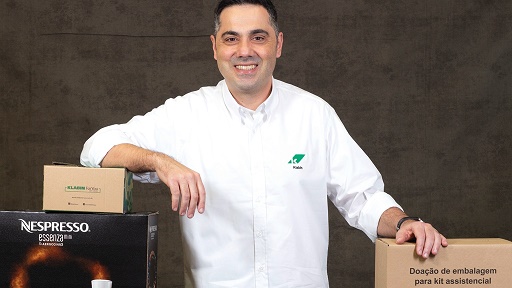
ON THE INTERNET - Cristiano Teixeira, CEO of Klabin: growth in visits to the company's virtual platform grew by 60% and the sale of paper packaging for food service has quadrupled in the last two months. (Credit: Claudio Gatti)
Sérgio Vieira
24/07/20 - 10h00 - Updated 24/07/20 - 10h24
A good thermometer to measure the retail temperature in Brazil, especially in the moment of crisis caused by the Covid-19 pandemic, is the production of packaging. The huge demand in supermarkets, added to the growth of e-commerce in the country after the beginning of social isolation, created a positive scenario for the paper and cellulose industry. If there are more orders for packaging, there is an increase in sales.
In this regard, it can be said that Klabin occupies a prominent role. In the first three months of the year, the company, which is the largest producer and exporter of packaging paper in Brazil, grew 8% in volume compared to the first quarter of 2019, with 849 thousand tons sold, a performance slightly above that observed for the the entire industry in the sector, which rose by 7.5% in the period.
"Both in the first and second quarter, we had higher sales in all segments," said Klabin's CEO, Cristiano Teixeira.
It was in the non-durable goods sector, such as food, beverages and pharmaceuticals, that the use of paper packaging grew significantly. In the second two months of 2019, it represented 79% of the total sold. In the same period this year, it jumped to 85%. On-line, the increase was driven by the addition of approximately 5.7 million new consumers, according to a study by Neotrust / Compre & Confie, who went shopping during the pandemic. More consumption by the computer reflects in more packaging.
On the company's virtual platform, the reflection was noticed since the beginning of the quarantine. Between March and June, the flow of visits to Klabin's network grew by 60%. In the last two months, the sale of personalized packaging for food service delivery and take-away has quadrupled, which already represents 15% of the website's packaging sales. Klabin recorded, in the first three months of this year, R $ 2.6 billion in net revenue, up 4% compared to the first quarter of 2019. Half of the result comes from the export of products and the other from the domestic market. The company is also among the world's largest suppliers of cardboard to Swedish giant Tetra Pak, the global leader in food and liquid packaging.
The only company in South America to supply the Swedish company, it expanded its share based on the need for more inputs to meet global demand. "Klabin was the company best prepared to react to Tetra Pak's demand and managed to operate with 30% more sales than normal," stated Teixeira. The perspective, however, is that there will be accommodation in the second half, due to consumption stability, differently from the scenario perceived in the first weeks after the beginning of the confinement.
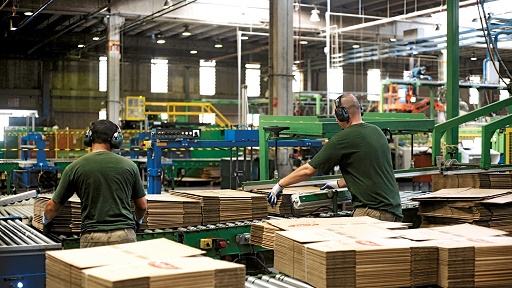
BEGINNING OF QUARANTINE: In the first quarter of 2020, the company recorded a 4% increase in net revenue, with R $ 2.6 billion, and the sale of 849 thousand tons of paper. (Credit: Disclosure)
E-COMMERCE
According to the president of the Brazilian Association of Corrugated Cardboard, Gabriella Michelucci, the initial stock of supplies, made at the beginning of the pandemic, and the race for the computer explain the initial growth. “Before the pandemic, e-commerce represented 4% to 5% of retail sales. Today, it is close to 7%, which shows the growth in demand for cardboard,” said Gabriella.
The outlook for growth in 2020 is much more shy (smaller), at 0.3% over the 3.6 million tons of corrugated cardboard shipped by companies in the sector, according to a survey by Fundação Getulio Vargas commissioned by ABPO. Taking into account that the Gross Domestic Product (GDP) should shrink 6.5% in the year, according to the Focus Bulletin, the positive balance of the segment, although minimal, can be seen as good.
“This result is a moderate scenario, considering the outlook for the second half. It also depends on how consumption will be from now on,” she said.
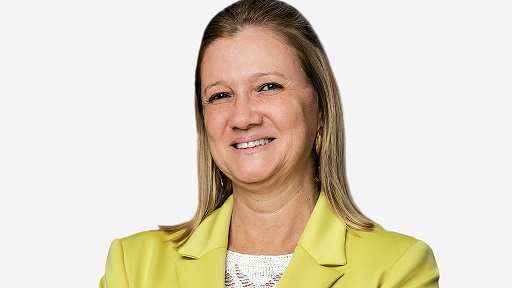
GABRIELLA MICHELUCCI: President of ABPO projects a 0.3% increase in cardboard volume in 2020. (Credit: Disclosure)
If, on the one hand, there was an increase in sales of paper and packaging from online sales, on the other, the pandemic brought a decrease in the volume of cement bags - a sector in which Klabin has 60% of the market. According to the National Union of the Cement Industry (SNIC), the market shrank 5.8% in the first quarter, compared to the same period last year, due to the construction stoppage due to the coronavirus crisis. With the gradual resumption, the expectation is that in the coming months the volume will return to levels registered before the pandemic.
INVESTMENT
It was in 2019, in a scenario where there was still talk of economic growth and not recession, that the company made the largest investment announcement in its history: the Puma II project, for which R $ 9 will be allocated until 2023, 1 billion for the construction of the unit where two packaging paper machines will be installed, with an annual capacity of 920 thousand tons.
Of the R $ 820 million of investments made in the quarter, R $ 527 million was allocated to Puma II. But not everything was positive for Klabin in 2019. At the beginning of last year, the company watched the announcement of the merger of competitor Suzano with Fibria, which resulted in the largest company producing eucalyptus pulp in the world, which it did with the price prices reached below expectations, due to the large volume of material stored by the company.
"Prices have not recovered until then, due to the increase in Suzano's inventory," stated Cristiano Teixeira.
In order to increase its market share, in March, Klabin completed the acquisition of International Paper's packaging business unit in Brazil, for R$ 330 million. With the purchase, which is still awaiting approval from the Administrative Council for Economic Defense (Cade), the company will increase its market share from 18% to 24%, in addition to reaching an installed capacity of 1 million tons of corrugated paper per year.
With 18 industrial units in Brazil and one in Argentina, the company is responsible for 498 thousand hectares, of which 240 thousand hectares are native forest. According to the company, 883 species of animals and almost 1,900 plants are preserved, in addition to 258,000 hectares of planted area of ??eucalyptus and pine, from which their products come.
On the one hand, environmental preservation, on the other the bet on innovation. One of the most recent initiatives came at the company's technology center, in Paraná. Company researchers, in partnership with the Senai Institute of Innovation, developed an unprecedented formulation of alcohol gel from microfibrillated cellulose, which replaces carbopol, an essential chemical element for production and which started to be lacking in the market, due to the great demand. Four tons were produced for distribution to 24 thousand health professionals in the country. It is not in the company's plans to produce alcohol gel, but rather to supply the input to companies in the segment.
The numbers of Klabin and the paper and cellulose segment itself could have been quite different in the isolation period, were it not for one detail: initially, the paper and cellulose sector was not considered essential by the federal government, even though it was fundamental to guarantee maintaining a large part of the Brazilian retail chain.
It was necessary for the company's CEO to inform ministers, by letter, that for the retailer to continue selling it would be necessary to have paper to pack the products. "There is no point in having the egg if you don't have the egg box," said Teixeira. ABPO's Gabriella endorses.
"If there was no liberation to manufacture packaging, there would be a total rupture for the industry." It was necessary for someone to say this for the President of the Republic and his team to reach the elementary conclusion that, without paper, has no delivery.
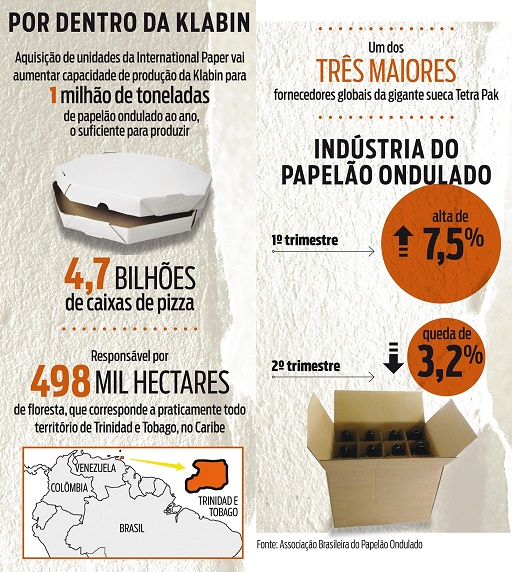
Source: Magazine “IstoÉ Dinheiro”
SUZANO
Suzano (SUZB3) estimates that the current pulp price level is unsustainable to guarantee the industry's profitability, but at the same time maintains a plan to produce and sell more of the paper's raw material this year compared to 2019.
The company, the largest producer of eucalyptus pulp in the world, ended the second quarter by reducing its inventories by 220 thousand tons and estimates that in the sector the product levels are balanced.
However, Suzano executives said in conference calls on Friday that the Covid-19 pandemic caused a postponement of plant maintenance stops across the industry to the second half of the year, which could impact the pulp supply at a time when the demand for papers other than sanitary ware is beginning to recover.
Suzano, which in 2019 concentrated its stops in the first half, did the opposite this year and is expected to perform maintenance on 10 of 12 production lines in the second half of 2020.
Despite the scenario, Suzano's chief executive, Walter Schalka, avoided making precise comments about the company's pricing policy in the second half.
“In the long run, the price is not sustainable. A relevant part of the industry participants works with zero Ebitda and the total with an inadequate internal rate of return, including Suzano, ”Schalka told reporters. "But when the adjustment (in prices) is going to be difficult to answer."
Suzano reported a loss of around 2 billion for the second quarter, impacted by exchange rate variations and a 35% growth in adjusted Ebitda, which reached 4.2 billion reais. The company's shares soared this Friday, leading the Ibovespa's highs with a jump of more than 9%, while the index showed a gain of 1%.
The president of Suzano also commented that the domestic paper market "has already gone through the worst" of the crisis generated by the pandemic, amid the resumption of retail in a number of regions in the country after easing social isolation measures.
Source: Moneytimes (https://www.moneytimes.com.br/preco-da-celulose-dificulta-retorno-mas-suzano-mantem-plano-para-2020/)
With all this, it was created at this market segment a big gap due to the absence of experienced and
capable professionals for occupation of positions mainly on management level, which arised in a time
period relatively short.

|